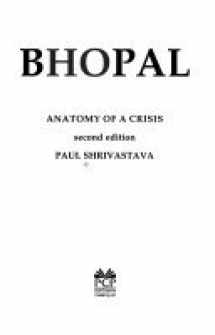
Bhopal: Anatomy of A Crisis
Book details
Summary
Description
The worst industrial accident in history occurred in December in 1984 in Bhopal, India. Uncontrolled emission of lethal gas from a Union Carbide pesticide plant killed over 3000 people and injured another 200,000.
Eight years later, the crisis still continues to plague victims, Union Carbide and government agencies.
In this revised edition, the author gives an updated account of events since 1987, and expands on the lessons to be learned from the lingering nature of the crisis. Industrial crises have identifiable causes - human, organizational, and technological - and their consequences demand new business and social policies designed to prevent such crises in the future. This is the critical challenge we face in our rapidly industrializing world.
Bhopal is only one dramatic example of how the rapid and haphazard infusion of new, sophisticated technologies puts stress on the economic and social infrastructure of a community. Severe stress turns industrial accidents such as Bhopal into crises that lead to a pervasive disintegration in the social organization. Developing countries are particularly vulnerable to crises since they lack the resources to handle them safely, but the Chernobyl accident shows that the high-risk technologies also threaten developed societies and affect stakeholders well beyond the boundaries of the local community. Using the Bhopal accident as a strategic example, Shrivastava examines the causes and consequences of industrial crises and proposes new business and social policies for preventing them in the future.
In a world where disasters like Bhopal and Chernobyl occur with alarming frequency, Bhopal: Anatomy of a Crisis should be required reading for anyone concerned about averting such tragic
and costly accidents.
Paul Shrivastava, a native of Bhopal, has returned to that city several times since the accident to investigate the consequences first-hand. He has conducted more than 200 interviews with people
both in the United States and India, including many Union Carbide officials. Shrivastava is the Howard I. Scott Professor of Management, Bucknell University, and Editor-in-Chief of the
Industrial and Environmental Crisis Quarterly.


We would LOVE it if you could help us and other readers by reviewing the book
Book review



